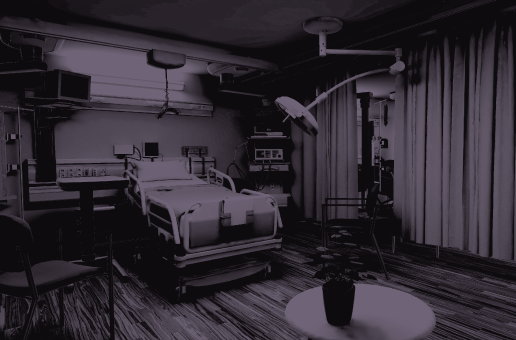Table of Contents:
For most of us, it is absolutely clear that technology has helped many businesses and people around the world develop, especially now, during the pandemic. Innovative technologies enable companies to maintain and adapt to the constantly changing business environment and most sectors have accelerated to the future in the past year. The insurance industry is no exception. VR insurance, AR in insurance – these technologies are the beginning of the industrial revolution. The use of immersive technologies has been rapidly growing and XR (Extended Reality) is becoming a focal point for most modern insurance companies. It is increasingly leveraged to provide solutions that address current issues. How is Virtual Reality in the insurance industry used? What are the benefits of using AR in insurance?
VR and AR in the industry sector
From personal health to corporate security, the insurance sector struggles with a wide array of possible risks. The industry has to do mainly with complex processes related to each other. On top of that, there are numerous critical situations that may arise unexpectedly. The current situation has changed the experience of customers, agencies, and brokers so insurance carriers were forced to work on new ways of operating their businesses. It turns out that a significant role will be played by Augmented and Virtual Reality. The pandemic has accelerated the use of these technologies – they enabled remote risk assessments in a cost-effective way and resulted in reduced loss ratios. AR and VR in insurance have become a base for marketing campaigns and sales pitches. Now, over 85% of top managers in the insurance industry admit that VR and AR systems are crucial for reducing physical distance with customers and employees.
Virtual Reality in the insurance industry – how is it used?
VR is a digital technology that provides the user with a fully immersive visual experience. The experience is delivered through a headset or smart glasses. Virtual Reality in the insurance industry has, for instance, the potential to simulate workplace environments. Also, thanks to VR, insurance carriers can connect with customers, train teams, and gather information easier than ever, no matter conditions and location. One might say that VR is transforming insurance. How?
- Risk assessment and underwriting are enhanced – insurers learn more thanks to a fully immersive environment, safety and efficiency are improved. Insurers can replicate any environment or simulate any potential situation. This leads to more informed insurance decisions.
- Customers are more engaged – today’s customers are hungry for customization and efficiency. And VR in insurance has the potential to deliver this, improving the way insurers engage with customers.
- Claims experiences are improved – compensation claims are more and more often handled by bots which speed up the assignment of new claims.
Augmented Reality in the insurance industry – how is it used?
Augmented Reality is a digital display over a real-world view. The technology offers a very convincing experience because the visual field includes the user’s real surroundings. The user uses a headset, glasses, or a mobile device. Augmented Reality is an alternative to VR, mostly when a person’s own physical environment is an important factor. How can AR be used in insurance? Some insurers use machine vision in areas like claims damage assessment and risk mitigation for personal property. Augmented Reality in the insurance industry allows the assessment process to happen in real-time while incorporating information like condition, building materials, or damage potential. It is used for customer education, risk mitigation and loss control, guided underwriting, or claims adjusting and assessment. The technology may be helpful in predicting risks either before they happen or as they happen for both. It can also help customers identify and avoid risk in real-time by educating them and incentivize less risky behavior.
Benefits of AR and VR in insurance
Needless to say, innovative technologies boost all industries including the insurance sector. VR and AR in insurance lead to a positive customer experience and reduce the need for customer service representatives. Second, VR and AR can simulate a work environment and the risks and hazards that employees may encounter which is great in workers’ training and rehabilitation. Third, Virtual and Augmented Reality affects claims and underwriter education. Read more about the benefits of Virtual and Augmented Reality in the insurance industry below.
VR and AR in insurance – virtual offices
Virtual offices and branches started to come up a few years ago, together with virtual bank branches. Stats show that Virtual and Augmented Reality might be an amazing value for virtual insurance offices. Virtual branches make it possible for customers to interact with the consultant through video or even a hologram. Virtual offices are proved to have a higher conversion rate when compared to e.g. call centers and customer satisfaction is also higher. A great benefit is the opportunity to collaborate with experts from various fields of the insurance industry. They can discuss particular cases and solve urgent issues in virtual meeting rooms which reduces costs by up to 50% (no traveling, accommodation costs, etc.). From a client’s perspective, a virtual branch’s offer is usually richer than in stationery insurance branches and it is much easier to access the services. No need to highlight that using Virtual Reality in the insurance industry is also an answer to young generations’ needs.
Enhanced customer service
The insurance sector very often deals with property or automotive serious damage. Such situations require an insurance agent who will inspect and assess the damage. The client who suffered in the situation has to wait for the agent to come or even pay some additional costs. VR and AR in insurance make it possible to provide real-time assistance which speeds up the entire process. This really improves the customer service. When it comes to customers, it is worth mentioning about education that is boosted by advanced VR and AR technologies.
Damage visualization made easy
Better damage estimation based on VR and AR models and simulations is one of the most important benefits of AR and VR in insurance. Investigators can evaluate post-disaster damage from a safe distance by using 3D footage for ‘up-close’, virtual exploration of the area. AR and VR help insurers determine the damaged area of various objects and provide 360-degree assessment by using 3D models built from photos of the damage. Technical specialists are able to understand the damage volume by overlying object images representing the object condition before and after the accident.
Improvement of risk assessment
Thanks to Augmented and Virtual Reality, insurers or underwriters can explore an entire building via visualization or simulation derived from on-site images and building schematics to look for conditions that might pose a safety hazard. Also, the customers are presented with situations which make them understand various risks in more detail.
Documentation processes made smooth
Augmented Reality provides remote assistance and enables the reduction of visits by insurance agents to places where issues might have occurred. This makes extra paperwork unnecessary and saves work time. Also, AR remote assistance challenges the physical distance and makes it possible to document various processes – they can be used again later for numerous reasons. This way, evaluation processes are much easier.
VR in insurance – training
First and foremost, Augmented and Virtual Reality helps provide precision and safety and these play a significant role in liquidating accident consequences. You can easily overlay damaged areas and prepare necessary instructions to remotely help specialists perform any operations. Technical experts are able to remotely guide juniors e.g. marking necessary areas on a mobile device built-in screen and add some useful tips. Augmented Reality in the insurance industry is a great way to reduce expenses and increase work effectiveness, also when it comes to training.
Read also: Virtual Reality Soft Skills Training
How is Virtual Reality used in the insurance industry?
Virtual Reality in the insurance industry can simulate workplace environments, connect insurers with customers, train teams, and gather information more efficiently than ever before. VR is transforming insurance by enhancing risk assessment and underwriting, improving the claims experience, and engaging customers.
What are the benefits of using AR in insurance?
Augmented Reality in the insurance industry is used for customer education, risk mitigation and loss control, guided underwriting, or claims adjusting and assessment. AR technology may help predict risks before they happen, as they happen, and incentivize less risky behavior. AR leads to a positive customer experience, reduces the need for customer service representatives, and affects claims and underwriter education.
What are the benefits of VR and AR in insurance?
VR and AR technologies can provide a positive customer experience, reduce the need for customer service representatives, enhance claims and underwriter education, simulate work environments, connect with customers, and gather information more efficiently. VR and AR can also be used for virtual offices and branches, enhancing customer service and boosting education.








